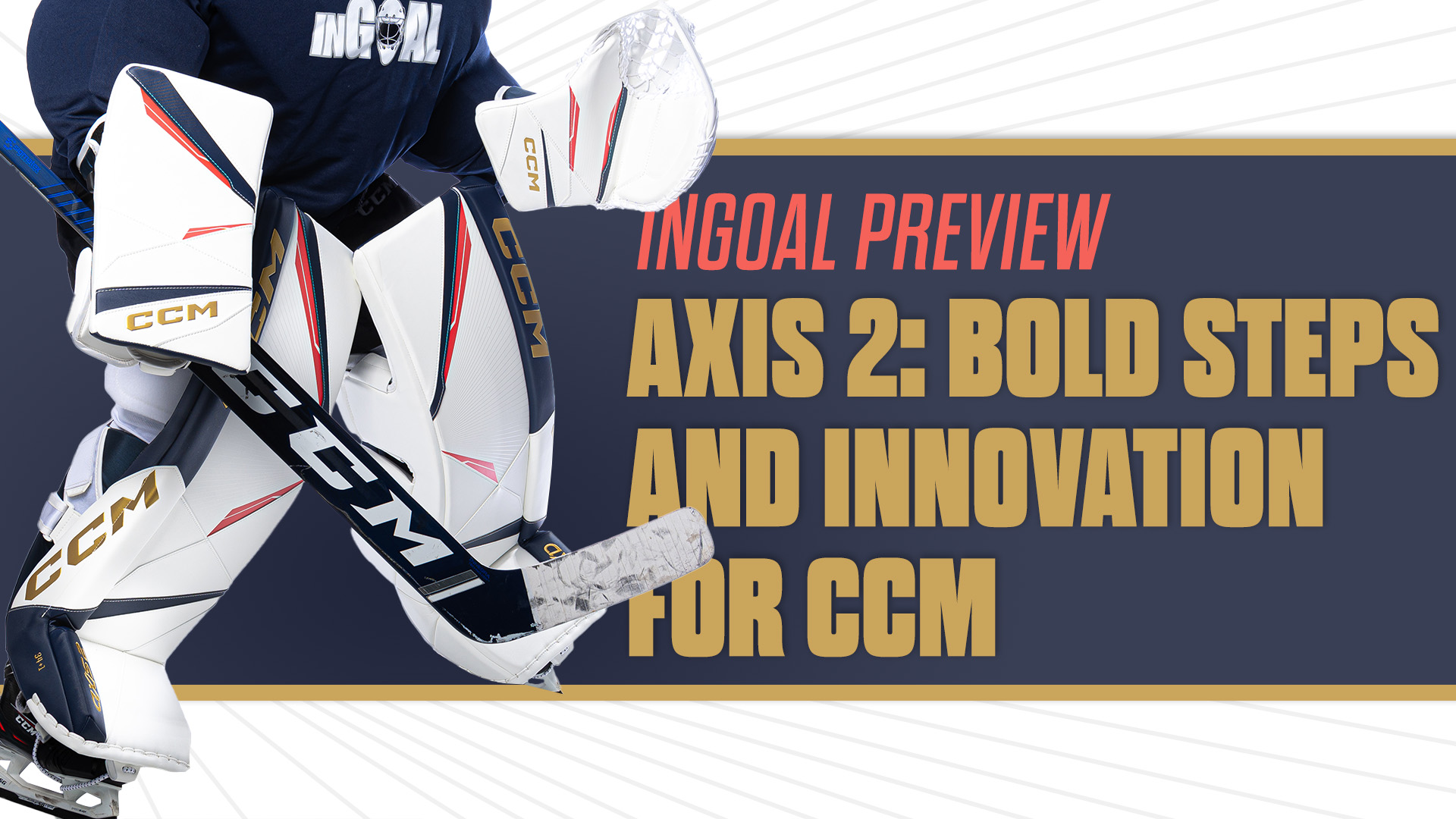
When CCM introduced the new AXIS line two years ago, the pads represented a significant departure from the Premier line that preceded it for the previous 16 years.
Turns out, CCM was just getting started with at first iteration of AXIS.
Their new AXIS 2 line contains bold, innovative changes to both the pads and gloves, including a re-engineered knee and inside edge to get you to the ice faster and keep it sealed better, a new strapping system, a stiffer profile through the thigh, the first ever asymmetric graphic, new internals for a “591 break” as the stock glove, and their lightest glove and blocker ever.
We’ll start with a closer look at the pads, and an all-new knee area they’ve labeled their DRS (Dynamic Response System) Pro, but first a caveat about our first look at AXIS 2: While InGoal was blessed to get on the ice early with the new line, this is more of an overview of the features to coincide with today’s launch of their new customizer (which also mean you can now place custom orders). While it will include some insights from those early sessions, the plan is to hold off on our deep dive review, with input from a deep list of testers from minor hockey to major junior to beer league, until the full launch of the AXIS 2 line at retail stores in early June.
NEW KNEE, STRAPS, STIFFNESS MAKE AXIS 2 PADS A BOLD DEPARTURE
Seeing a “DRS Pro” label on the reconfigured strap that extends from the new knee stack got the Formula 1 fans excited, and while CCM’s version does not stand for Drag Reduction System like those moveable flaps on the backs of F1 cars, the result may be just as thrilling.

CCM fixed the inner flap of the new knee stack to the inner edge of the pad, and then attached that to the re-designed one-piece knee block that sits atop it with Velcro flaps on either side, ensuring this new knee stack won’t get as floppy as its predecessors over time, which allows the goalie to drive the entire pad the ice faster, without any lag between the knee and the face.
The results on the new knee are a distinct “thud” when you drop into the butterfly that was hard to miss our first time on the ice in AXIS 2, a great seal top to bottom along the ice, and a comfortable balance with plenty of support when you’re on your knees in the butterfly.
CCM also made sure to dampen the impact of that thud by adding a layer of impact-absorbing foam under the 3D grip design at the top of that knee block, which is now all one piece rather than a separate layer on top connected by Velcro, further enhancing that connection.
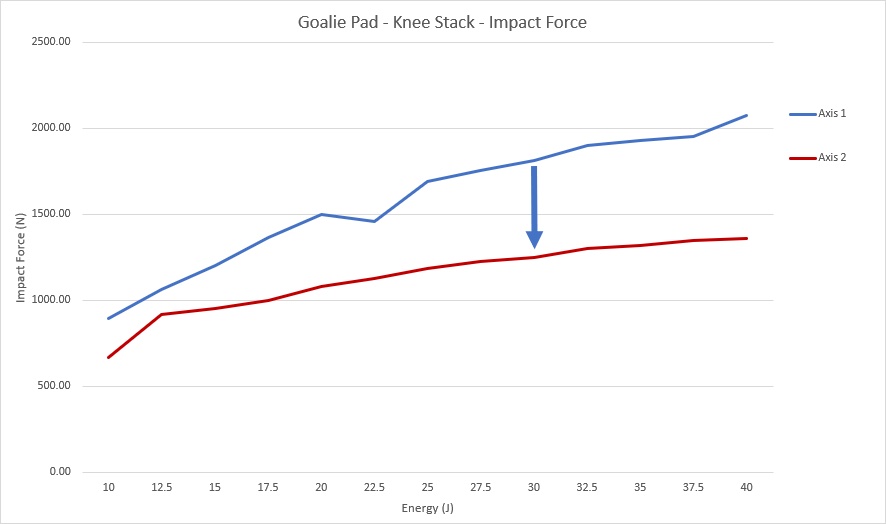
To say that added impact absorption had an effect would be an understatement. Lab testing showed a 31.2 percent reduction in impact force from the original AXIS knee, a significant reduction that should not only reduces wear and tear on goalies’ knees and hips but based on high-speed camera motion capture that we’ll share in our full review in early June, it also helps the pad establish a good seal to the ice faster because there’s less bounce or settling.
Even the knee stack strap has been re-designed, with two tabs running into the knee block and attaching by Velcro between the part of the knee area that is now attached to the side of the pad and that larger knee block, allowing goalies to slightly adjust the angle of that double-elastic strap depending on if they want to attach it down to the outside of the calf wrap, a style pioneered by Carey Price in his first CCM sets, or around the knee to a removable flap.

SO, WHAT DOES IT DO?
If all this sounds similar in theory, if not execution, to what Bauer did with the StabiliSlide knee in their UltraSonic pad and the StabiliFlex knee stack in the HyperLite pad, you aren’t wrong. There is a little give in the new CCM AXIS 2 knee stack, so we’d probably compare it closer to the latter, but all three are designed to maximize the research led by Ryan Frayne, a beer league goalie with a PhD in biomechanics who has partnered with CCM on goalie equipment research for years, that proved a properly strapped pad can actually get to the ice before the goalie’s knee because the initial butterfly drop can actually create separation between the knee and the knee stack as they got to the ice, allowing the pad to arrive first. Of course, if that initial drive impact is into a floppy knee stack, all you do is push it down below the leading edge of the pad, with freeze frame images showing that knee stack arriving before the pad gets to the ice.
The new DRS Pro system solves that issue for CCM by fixing that knee stack firmly to the inside edge of the pad to help optimize that butterfly drop and get you to the ice faster.
According to initial testing by Frayne’s crew at Dalhousie, the AXIS 2 pad gets to the ice notable faster than previous models, with the improved rate of peak butterfly drop velocity roughly equal to the thickness of a puck in terms of how much sooner it hits the ice and starts to seal. (Again, we’ll share more of those results in the full review)
SPEAKING OF STRAPPING …
CCM has also changed their QMSS (Quick Motion Strapping System) around the calf.
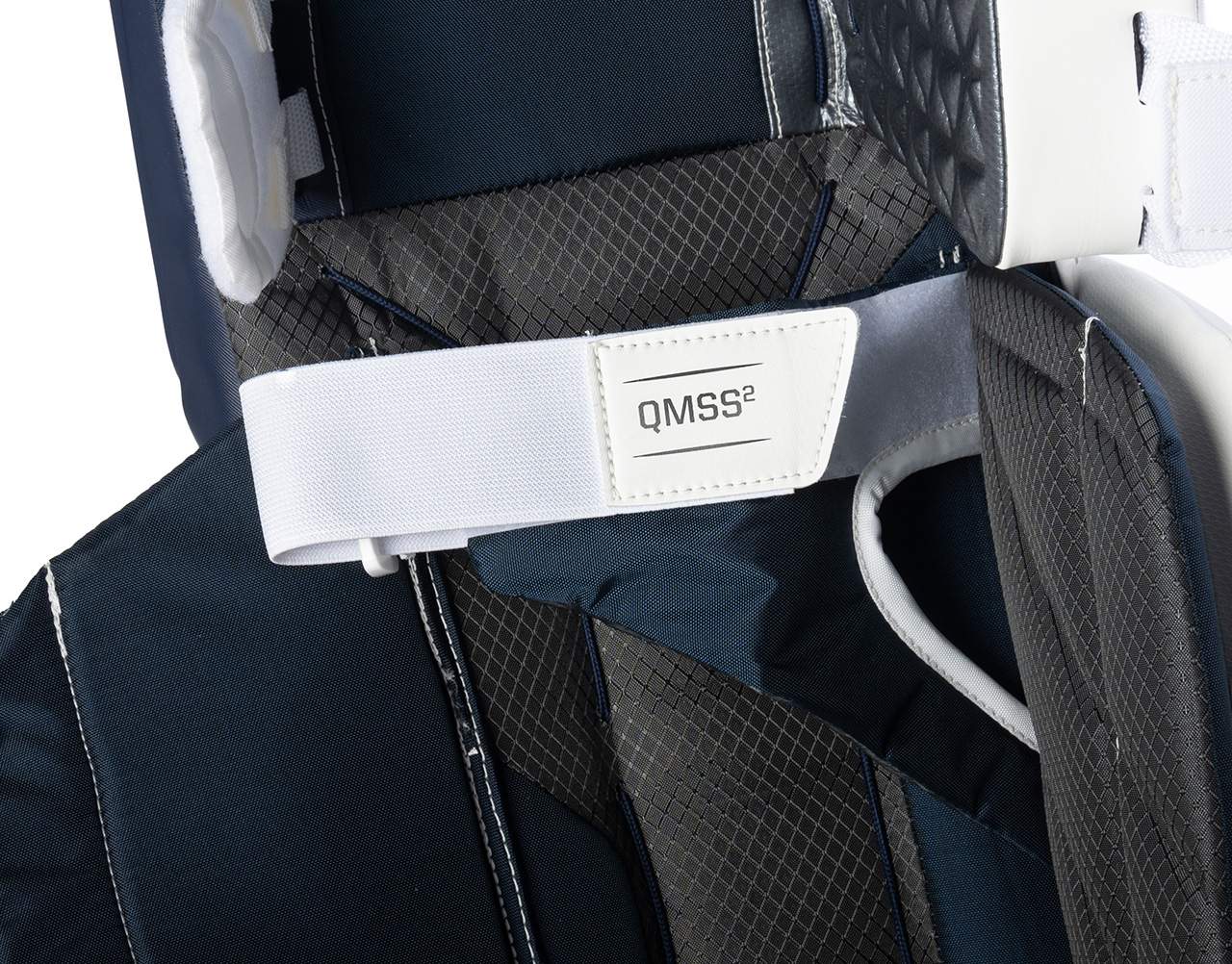
Where the QMSS in the original AXIS pad sat lower on the leg with a centered “Y” strap on the inside edge, the new QMSS 2 system is located higher up the leg channel and designed to wrap around the top of the calf. There is still a “Y” strap attached to the inside edge of that channel, but it’s now angled rather than centered, so the strap runs across at the top anchor.
In some ways, it’s like the “Professor Strap” that former NHL goalie Ben Scrivens made famous in his Vaughn pads, helping to improve the connection between the lower leg and the pad and, if you want to strap it up tight enough, even holding the pad up higher on the leg.
That leg channel comes stock in a “loose” fit, a choice that can be changed on custom orders, but one that makes sense given how stiff this AXIS 2 pad is compared to the original.
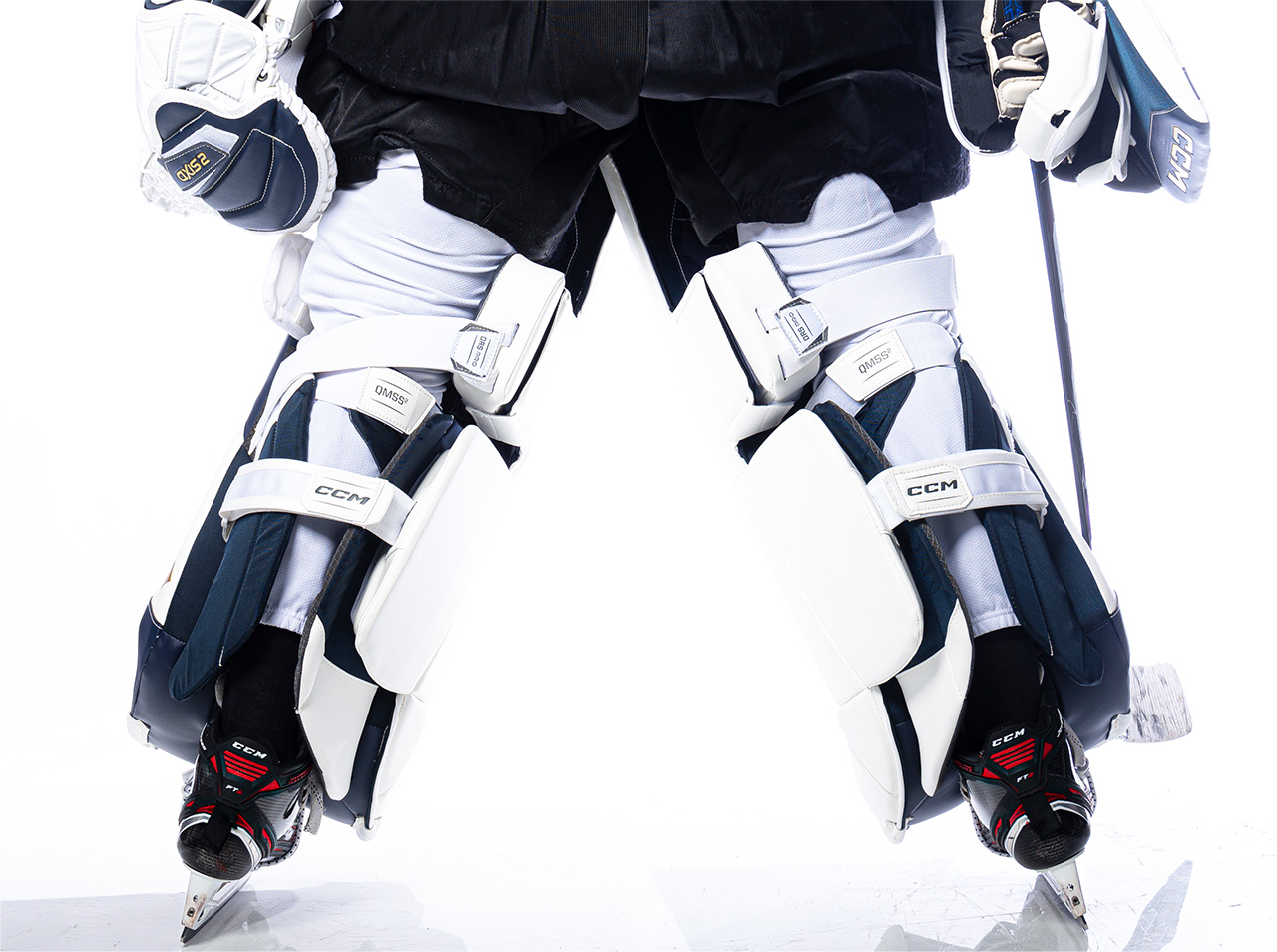
While the AXIS 2 boot remains very flexible — and flat like the original AXIS and all EFlex models, a departure from the steep boot angle on the Premier — the rest of the pad is noticeably stiffer than the first AXIS model, at least above the knee of its stock pre-curved profile. In fact, with the one-piece DRS system along the inside edge, CCM says the pad is twice as stiff as AXIS.
There is another benefit to that stiffened inside edge of the DRS system: because it is made with higher density foam to achieve that stiffness, it should also slide better in combination with CCM’s Speed Skin material, and early feedback suggests that’s the case.
Rebounds will also rocket off the AXIS 2 pad thanks to a top layer of CCM’s MaxRebound+ foam on the face of the pad, which comes stock with no boot strap and a bungee-style toe tie.
NOW FOR THE BIGGEST CHANGE … THE NEW 591 GLOVE
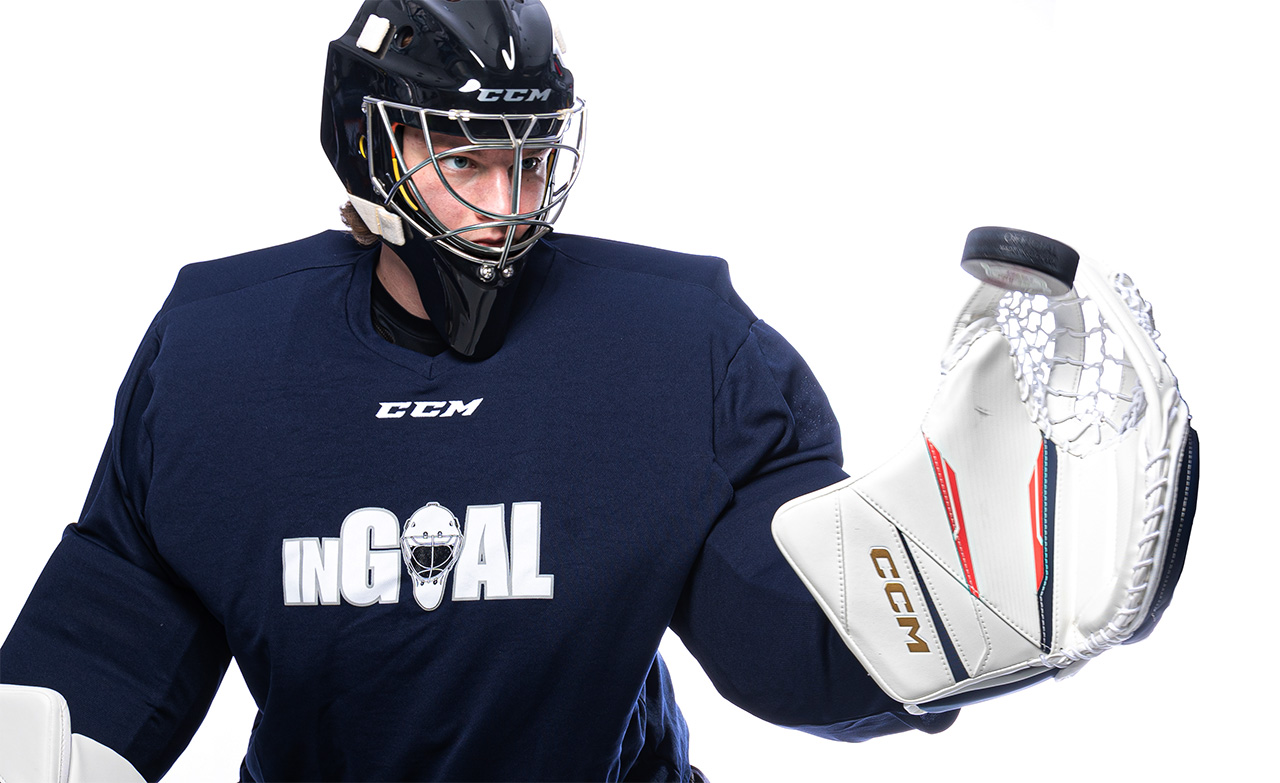
Given everything above, it’s hard to imagine much could change in a glove that has remained similar in design for more than a decade. But this isn’t that same glove, and believe it or not, the biggest change in the new AXIS 2 line may be the all-new 591 model.
Redesigning it from scratch allowed CCM to cut weight on a glove that had begun to feel heavy compared to some others, but a 15% weight reduction isn’t the big story. Not even close.
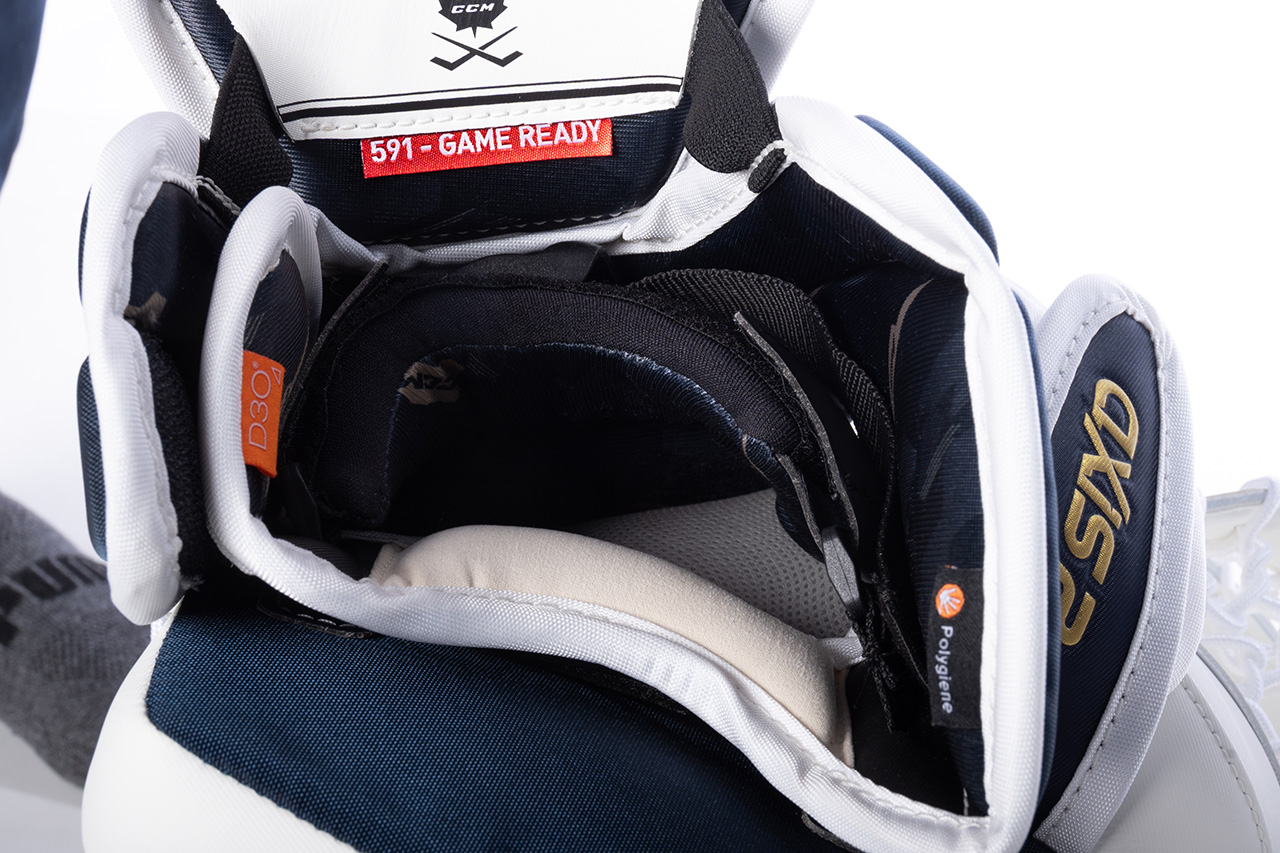
While the break angle is actually the same as that familiar — and for many, favourite — 590 original, the way the new 591 glove closes is completely different, starting with the fact there are no finger stalls on the inside, other than a new adjustable elastic/Velcro thumb loop.
While most of the attention is going to be on the lack of finger stalls — and we promise to get to the new system in a minute — the bigger change in terms of how this new 591 glove closes is the internals on the break itself, and the difference that makes to closure and protection.
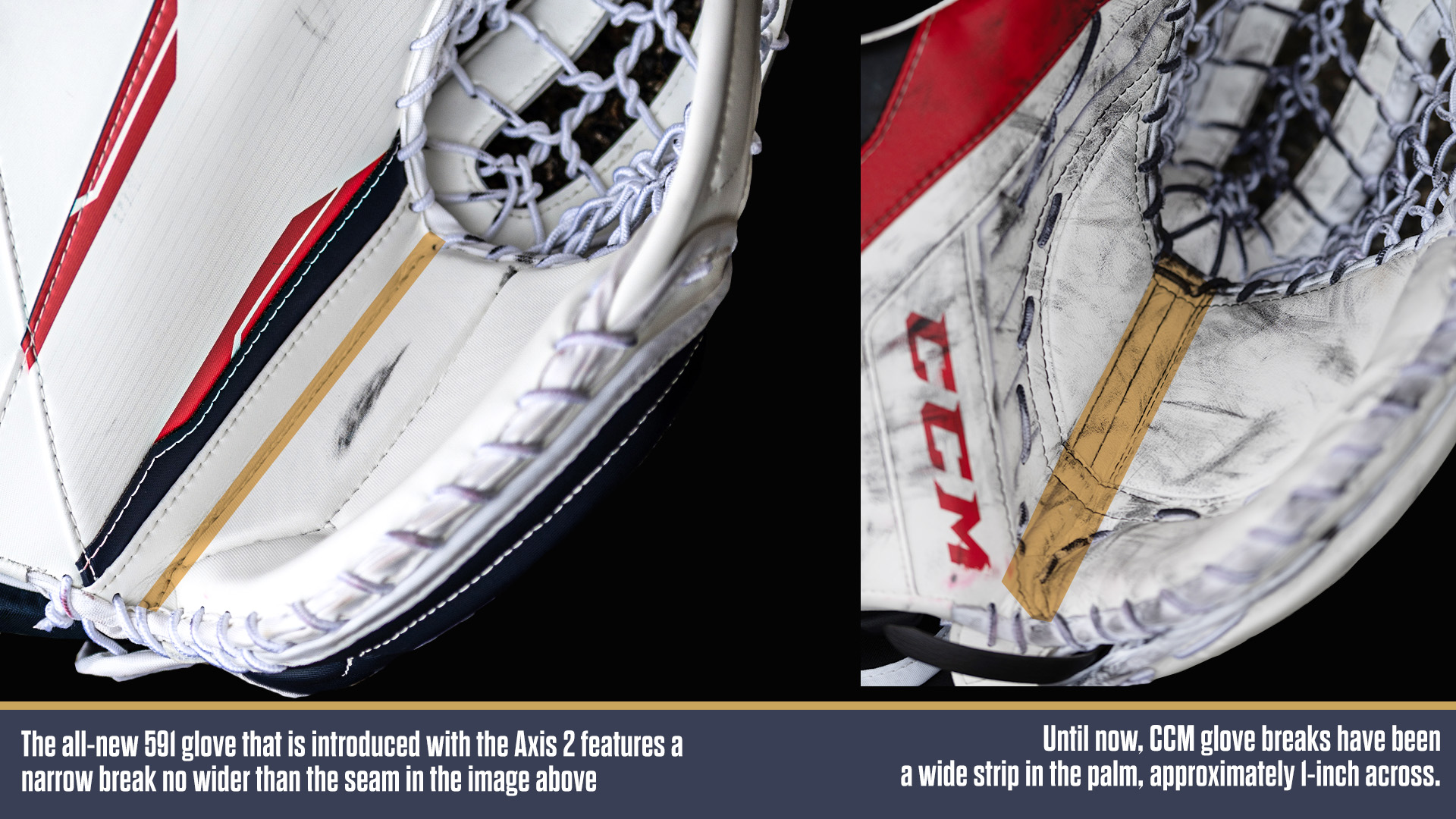
Where the traditional CCM glove has a roughly inch-wide break section running along the palm of the hand that was a primary point for potential stingers and sometimes shifted over time (our how-to video for breaking-in a glove included tips for resetting that break), completely re-designing the internals on the new 591 allowed CCM to remove the thick lacing and extend their injection-molded plastic finger piece deeper into the palm to create a cleaner single break, allowing for padding right to the edge and eliminating that wider break section that was almost like having two popsicle sticks running through the palm that your hand closed around.
The result is better palm protection and a closure that might be CCM’s best ever, though that comes with the caveat it took a bit longer to break in than past models and may feel stiffer off the rack at your local goalie store. Based on the early feedback, it’s worth it.
LOOK MA, NEW HANDS
OK, now back to those finger stalls, or the notable lack of any.
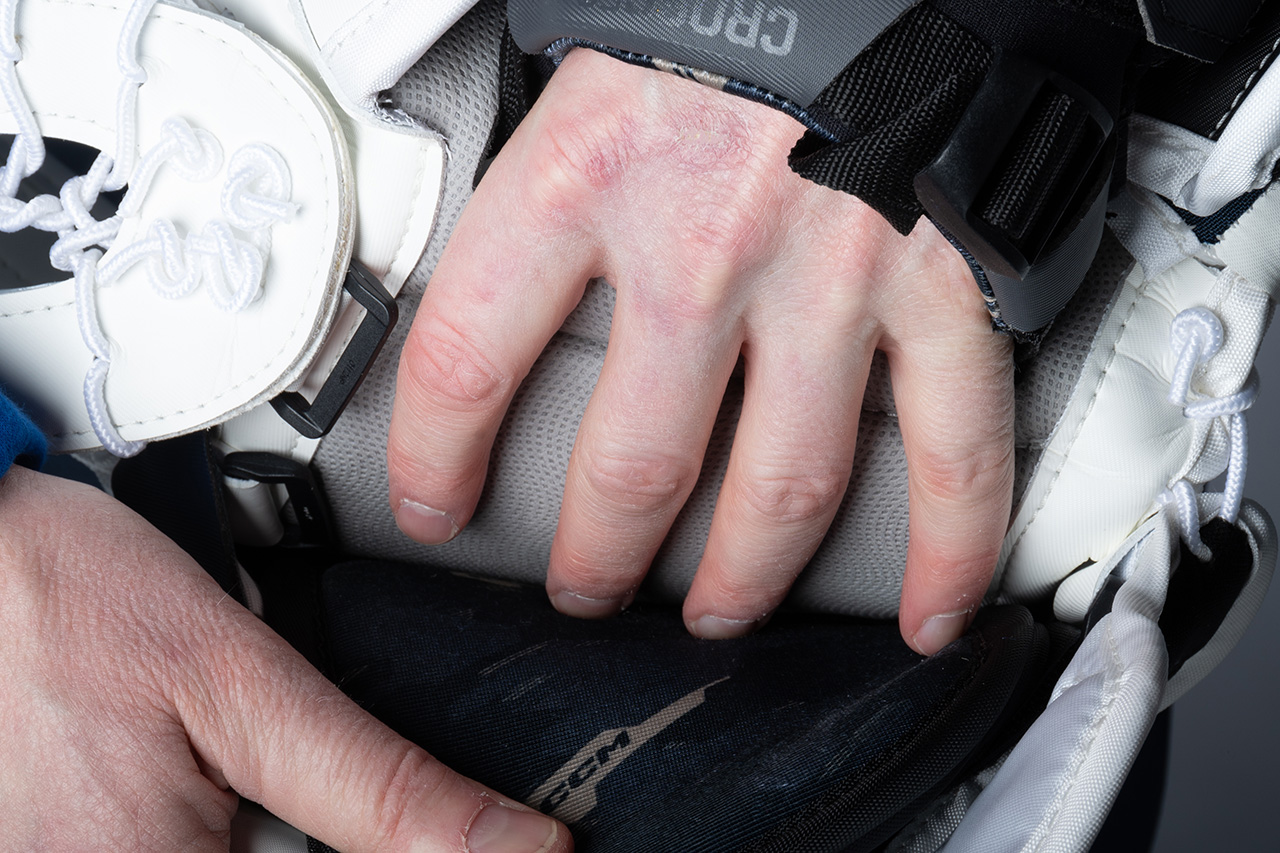
CCM completely re-engineered how the hand connects to the glove in two ways: a new Cross Form Strap system that anchors the back of the hand (while also freeing up wrist mobility even more) and an open, heat-moldable finger system with a three-point adjustable pad system over the back of the fingers to help secure and tighten your grip on that new closure.
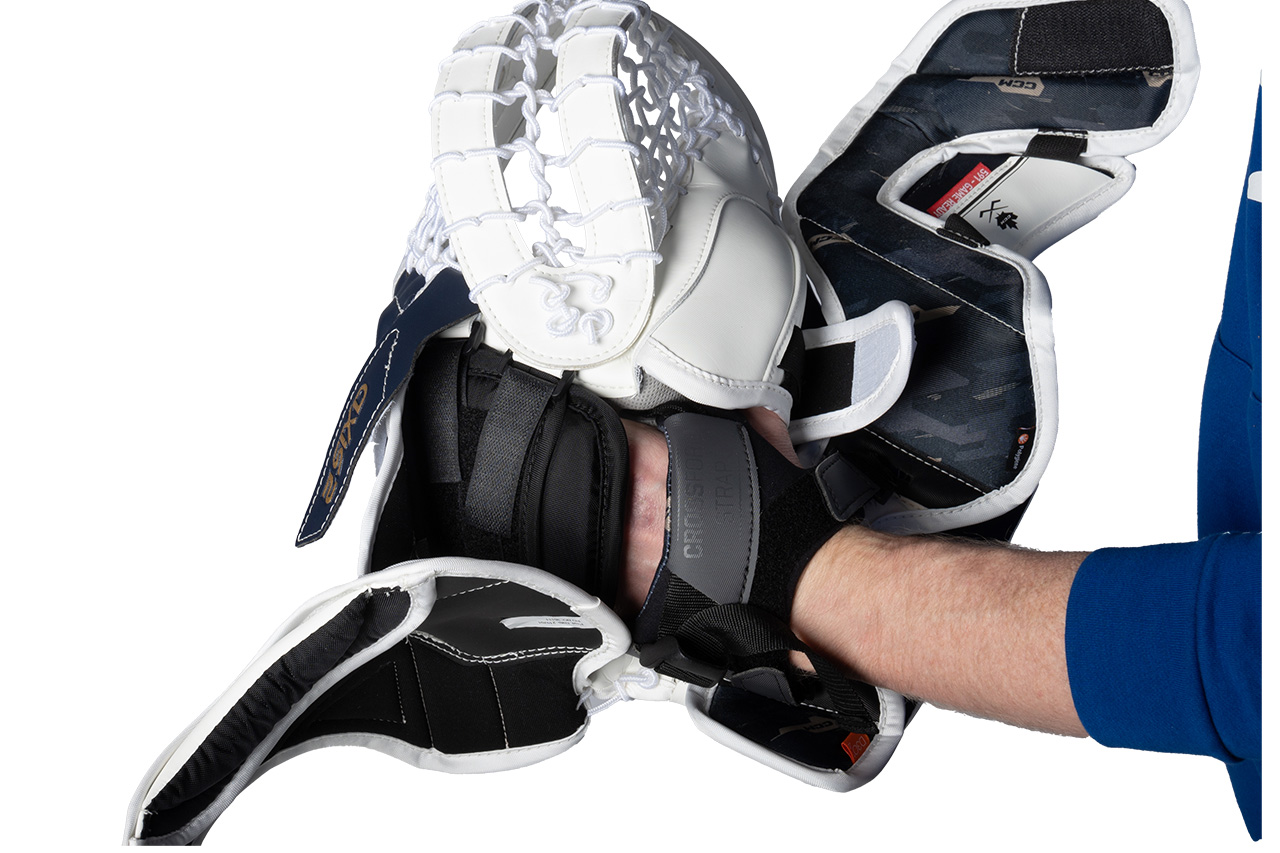
—While the idea of a heat-moldable finger system conjures images of using skate ovens to bake and break-in a new glove, the reality is by the end of our first skate in the new AXIS 2 591 glove, the heat from playing had already left natural grooves in the Sure Grip material that lines that new palm where our fingers closed the glove during that game. As odd as it might seem to some not to have those locations predetermined by finger stalls, the open design allows the hand to close naturally, with the fingers working into their strongest natural grip strength position rather than being artificially spread apart, especially down near the pinky.
It’s a bold departure, one that some may balk at. For those that are wary, don’t worry, you can still order the original 590 model glove — and of course the original 580 or 600 breaks — through CCM’s expanding custom programs (more on that below). For those willing to try something new, the reward comes from both the improved break mechanics and wrist mobility from that new Cross Form Strap, which is adjustable on either side at the base with Velcro tabs and across the top of the back of the hand with their more familiar buckle-and-strap system.
The new 591 glove also features re-enforced edges on the top of the pocket, an improvement worth noting for anyone who ever had a puck skip over the softer edges of past models and is lined inside with the Polygiene material used in player gear to eliminate odor and bacteria.
AXIS 2 BLOCKER
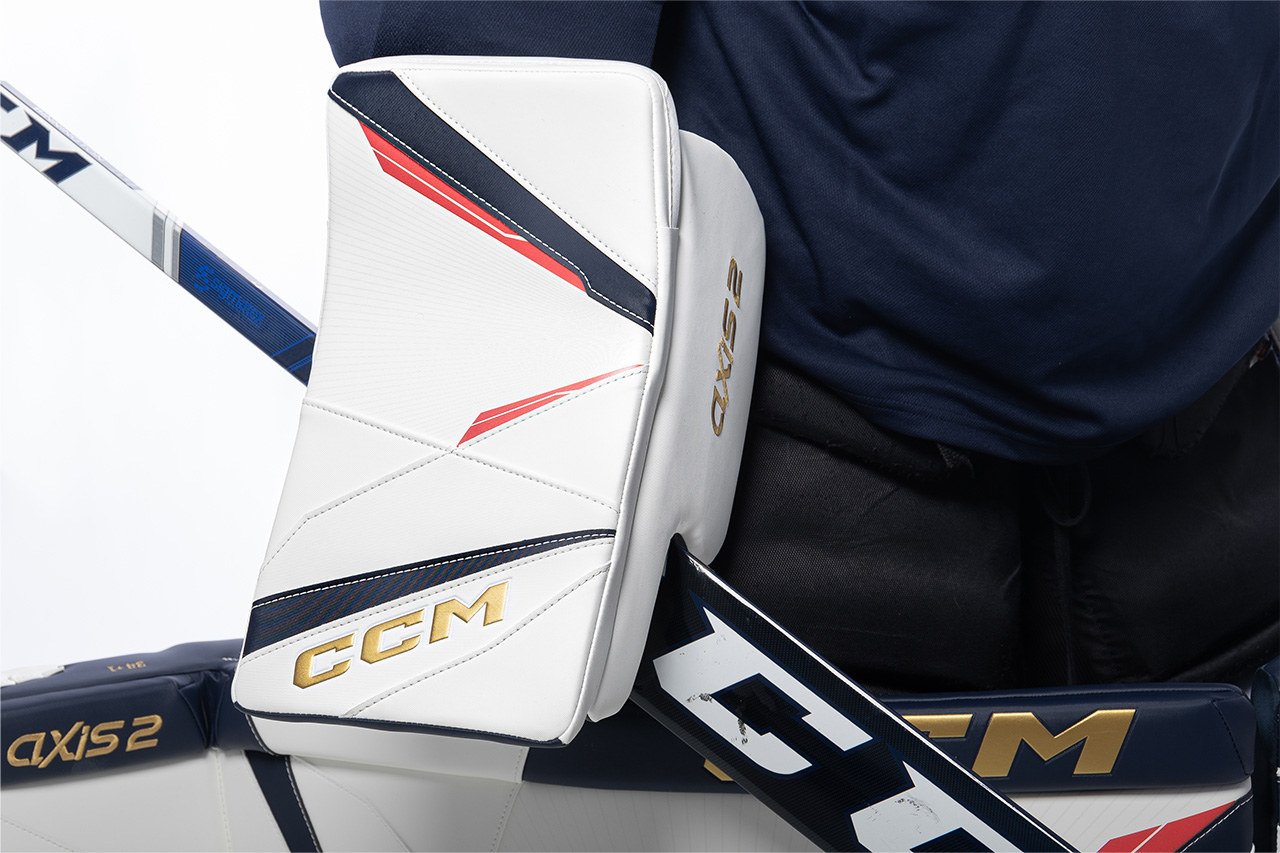
The changes may not be quite as bold on the new, lighter AXIS 2 blocker, but they’re notable.
The new Flex Motion 2 cuff is a lot more open and adjustable than past iterations, with a nylon-and-buckle strap over the wrist that replaces the old Velcro option and allows you to tighten things up without negatively affecting wrist mobility. The new cuff attaches with Velcro tabs on both sides, further increasing the adjustability and allowing goalies to set their own balance between the mobility of a wide-open cuff and a little more protection by closing it up.
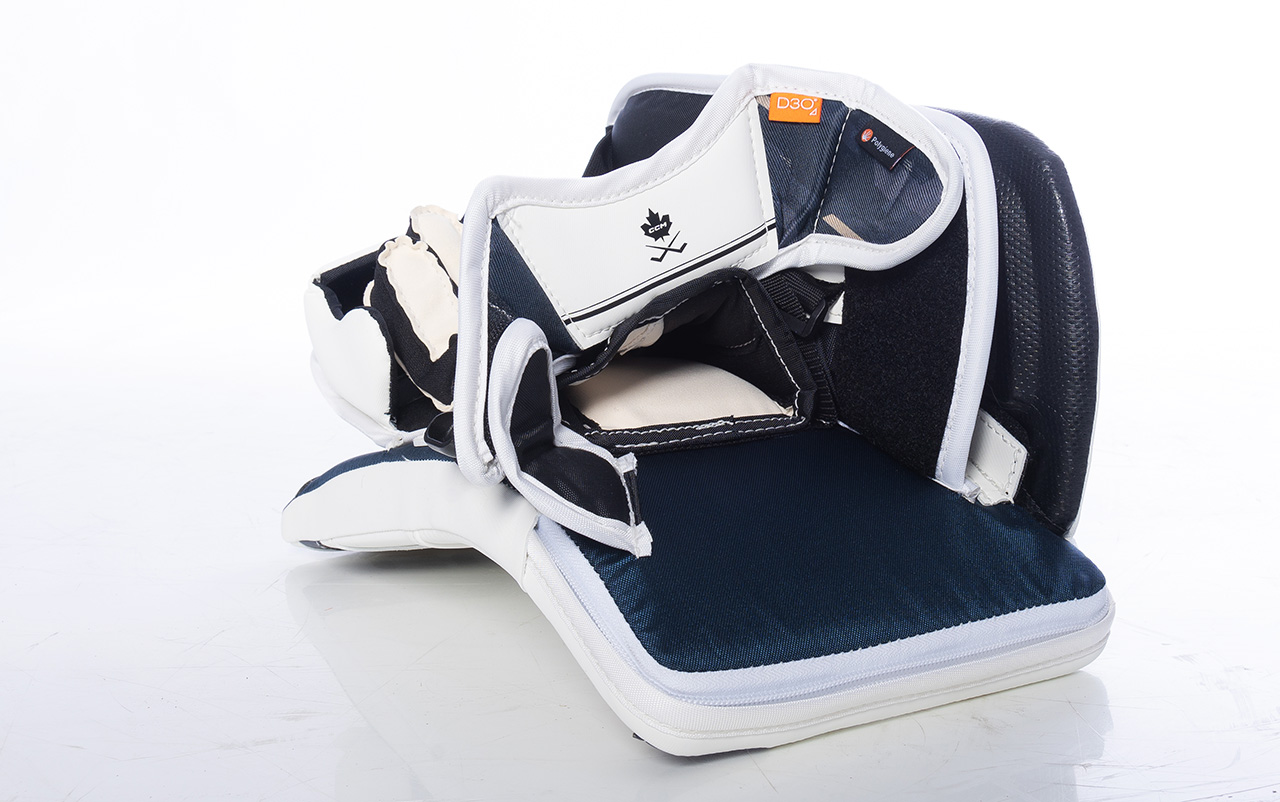
The sidewall had an added layer of padding built into the inside where it now attaches to the thumb with a Velcro strip rather than a leather tab, and that increased protection allowed them to slightly thin out the pillow that lines the thumb and add a break in the thumb protection piece, which allows it to move and flex more easily with the thumb than past models.
The use of bacteria-reducing Polygiene material continues in the blocker, which also follows the trend of using more of a player-style palm to achieve a tighter, more responsive fit by eliminating the extra material historically used in blocker palms, and the stock blocker features their Ax Suede Beige material with an extra layer over the palm for improved durability.
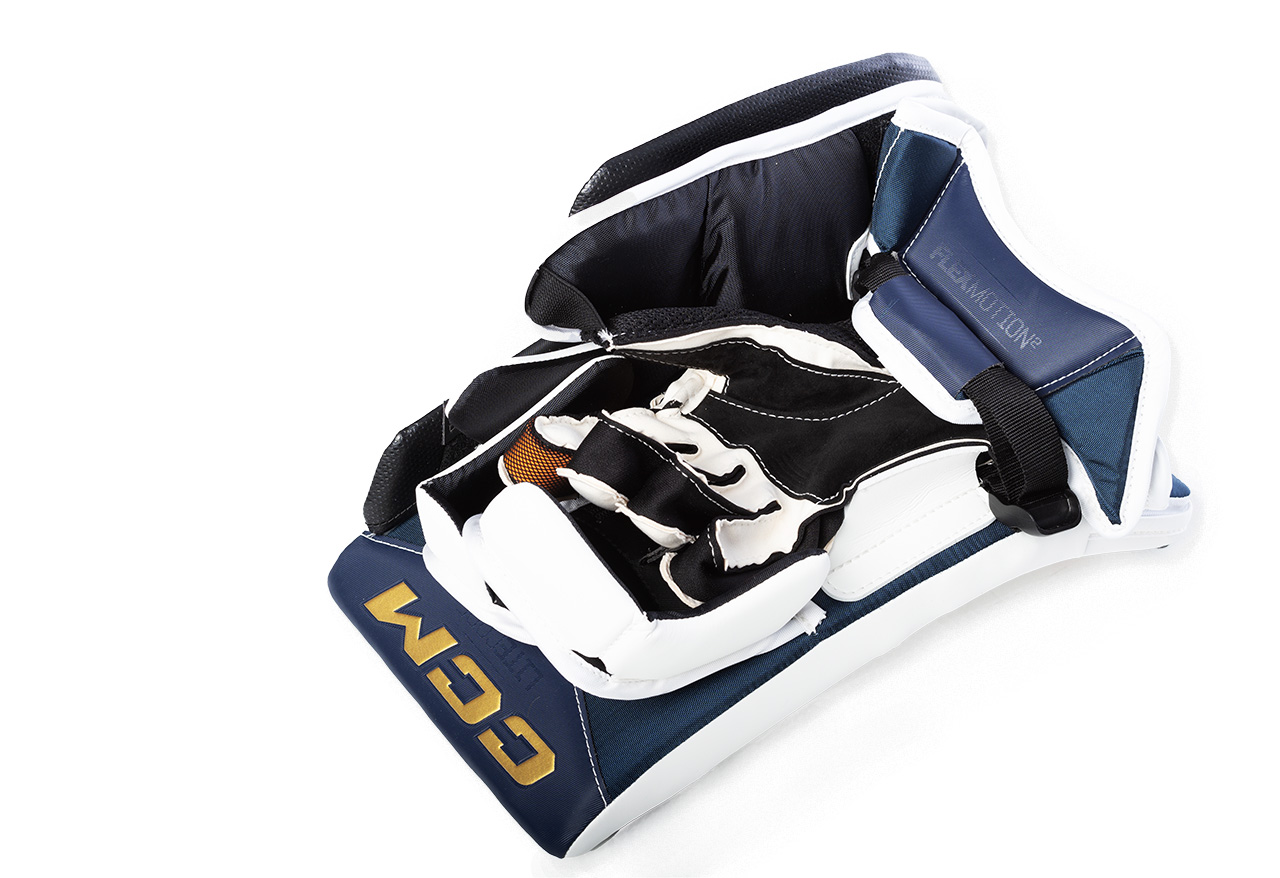
NEW LOOK AND NEW CUSTOM OPTIONS
It probably says a lot about the other innovations in the AXIS 2 line that we’re 2,000 words into an “overview” and haven’t yet delved into the asymmetrical graphic, with the ability to create a custom look across both pads rather than simply having the two pads mirror each other.
The customizer has a familiar feel but some new twists, with three different options that appear in the upper right corner when you are designing your pads, including the new Asymmetrical design and two variations of the traditional Symmetrical look: a “Tone on Tone” option for goalies that want a solid color in Zone G, which has a printed graphic, and a second one for goalies who want a “White Base” under that graphic in the same zone.
Perhaps the best part of those three different options in the pad portion of the customizer is the ability to design a different pad in each and toggle back and forth without losing the design you’ve built in each section, allowing you to compare the three options you designed. As for the All Out Custom graphics like David Rittich wore late this season with the Nashville Predators, those will be an option for AXIS 2 as well, but not likely available to the public until the fall, so if you need gear for the start of the season, you’ll need to use the current options.
In terms of specs, the list of options has never been longer.
CCM has divided it into two categories of custom order: Total Custom and Total Custom Pro, with more features and options in the latter. In fact, there are so many options, their custom booklet, which can be download as a PDF from the customizer, is 27 pages long.
You can check out the exact options, which mirror what NHL goalies choose from at the Total Custom Pro level, in that booklet, but here are a couple examples of the differences.
For AXIS 2 in Total Custom, goalies can choose from 4 leg channel options, while in Total Custom Pro there are 7 options, including the addition of a Velcro leg strap on the lower portion of the calf wrap, something worn by Thatcher Demko and Jacob Markstrom.
Total Custom has two flex options, including the stock per-curved thigh with a single inner break and no outer break, while Total Custom Pro has four flex options. You can also get a stiffer (but not steeper) boot in Total Custom Pro that isn’t an option in Total Custom, as well as throwback options like the old Sure Grip landing area on the knee, or a tab above the knee cradle to tie in some old-school thigh guard style knee protection.
For a complete list of options, be sure to check out the customizer. And for more on AXIS 2, stay tuned for an even deeper dive review here at InGoal Magazine in early June as we check in with our long list of equipment testers to add feedback on all these new features.
For more on the Axis 2 check out this video, the gear segment from Episode 171 of the InGoal Radio Podcast:
Comments
Let’s talk goaltending!
We welcome your contribution to the comments on this and all articles at InGoal. We ask that you keep it positive and appropriate for all – this is a community of goaltenders and we’re here for each other! See our comment policy for more information.




